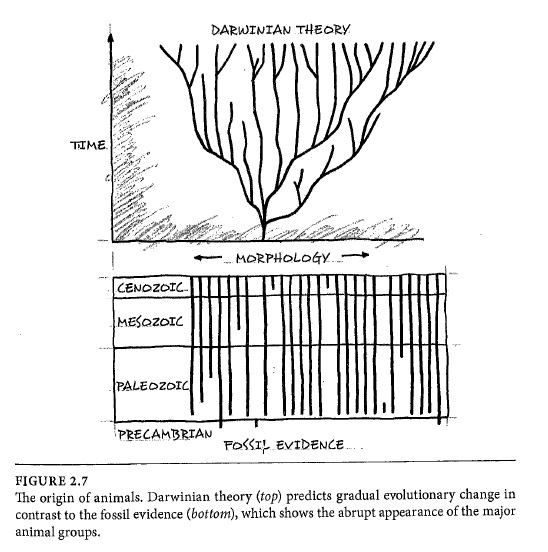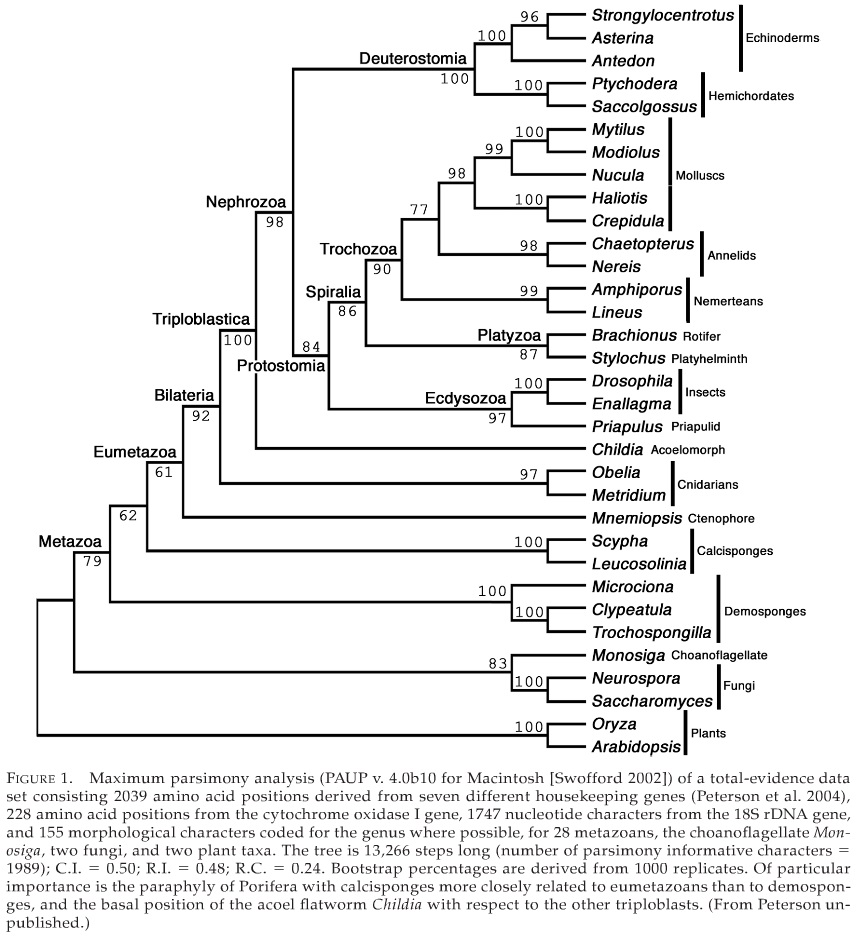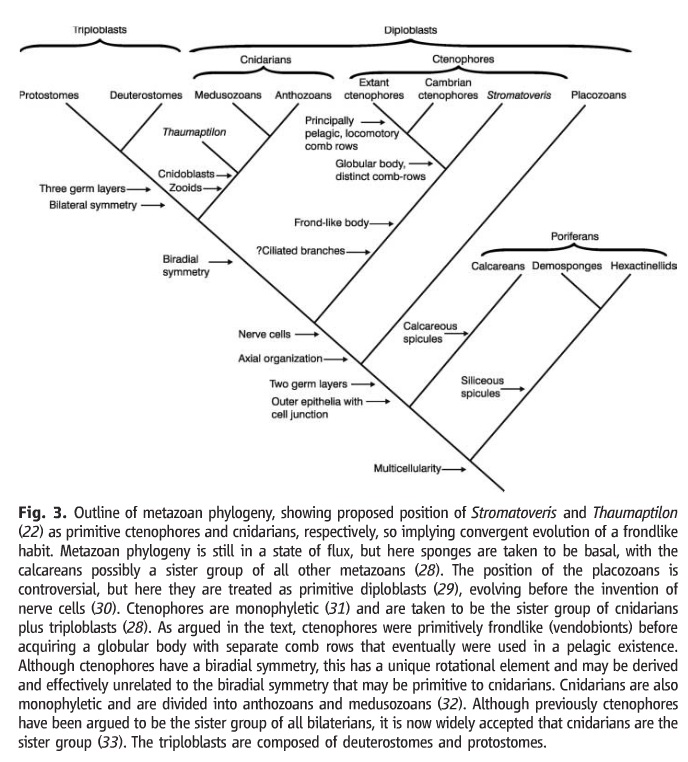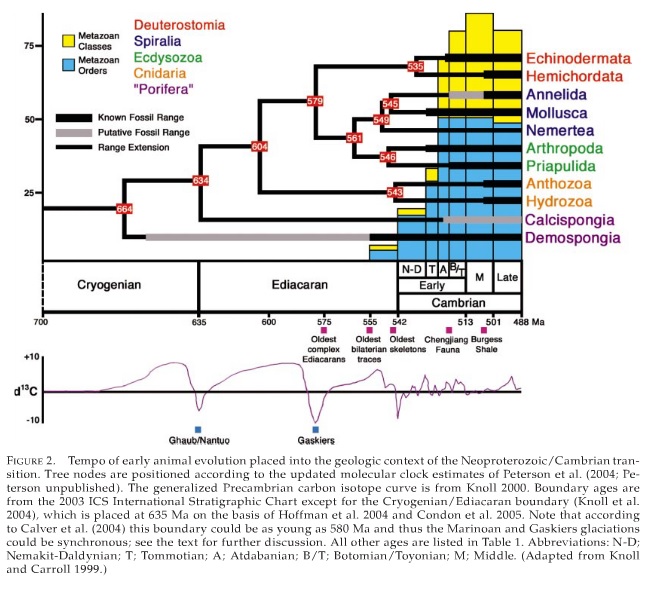One of my readers has specifically asked about two of the figures in Darwin’s Doubt. I want to directly address those two figures because they are so vital to understanding the misdirection that Meyer has given us. These figures are very important in a number of ways. First, they show how much Meyer has NOT studied the subject. Second, they show just what Meyer’s intention is in representing the material that opposes him.
I understand that Meyer presents more information on phylogenetics later on in the book. But that’s not the point here. The point is that Meyer specifically misrepresents the knowledge and practice of science in the field he’s writing about.
Here are his two figures, taken from pages 35 and 36 of his book.
Let’s talk about the problems with these figures. First, Darwin might have said “gradual change”, but that’s known to not always be the case now. Plants can even form a new species in one generation. I guess it depends on your definition of ‘gradual’. Keep in mind that Meyer doesn’t believe that 40 million years is gradual. Page 12 for example when Meyer says
More significant changes to the form and anatomical structure of organisms would, by the logic of Darwin’s mechanism, require untold millions of years, precisely what seemed unavailable in the case of the Cambrian explosion.
As we’ve shown briefly and will continue to show. The fossil record DOES NOT imply that all the various phyla appeared. Indeed, there’s a rich history of fossils and how they change over time. Meyer purposefully (or just does shoddy research) ignores all evidence to the contrary. For example, here I show quite a few of the papers that Meyer does not reference.
While the fossil record 100 years ago might have appeared to be like this, it’s really not.
Meyer, in figure 2.8, basically combines the graphs, making the same mistakes. He says that the vast majority of the animals haven’t been found, which is a classic god of the gaps argument, even if Meyer doesn’t understand what a god of the gaps argument is.
Notice how Meyer has given us a few props by saying that one branch of one group appears in the pre-cambrian.
I really hope that Meyer doesn’t want to base his entire argument on this line of (lack of) research. If he does, then he’s already failed. Let’s look at what some actual research done by actual scientists who are actual experts in this field produce.
The above diagram is from Peterson 2005. This diagram is based on molecular differences in various genera. The data used was quite extensive. The authors uses data from multiple genes and multiple characters from 32 different groups. This isn’t a ‘just-so’ story.
The percentages given in the tree itself are called ‘bootstrap percentages‘. This is a way to evaluate the strength of support for clades on the trees. The number by the node, is the percentage of bootstrap trees which also resolve the clade at the endpoints of that branch. In this case, for a 100% agreement, every single replication (of the 1,000 times the author did this) resulted in the same branching at that point.
Notice also, that the branches contain names. For example, deuterostomia is a super-phylum of organisms containing (among millions of other species) humans.
This diagram uses characteristics to show how organisms are related. This from Shu, 2006. The is the basics of cladistics. In spite of what creationists believe, an assumption of common descent is not used in the development of these systems. The only assumption is that of parsimony, that is, the cladogram that requires the fewest evolutionary changes is the most likely. That isn’t always the true, but the cases where that claim isn’t true are usually quite obvious. For example, the fact that flight evolved at least four separate times (at a minimum).
Here’s one (also from Peterson, 2005) that shows the time of divergence based on molecular clocks. Again, this isn’t s just so story, the authors compared their divergence times to the actual fossil record. They found that the estimates for the molecular clock divergence agreed with the fossil record.
These are not isolated examples, the literature is full of these kinds of examples.
Honestly, there is no place in a book like this (and I’m still not totally sure of the purpose of the book, except to attack evolution) for made up diagrams. Not when there are dozens of diagrams that actually exist made by actual scientists who spent years performing molecular tests, running programs, and then comparing that to the actual events in the fossil record.
Meyer’s diagrams are so different than what exists in the literature that they are essentially strawmen. That is, they are totally made up and have no relationship to reality. By attacking them (or using them to show that evolution is wrong), Meyer is just wanking.
For an excellent discussion of phylogenetics and how Meyer flubs it completely, please see this EXCELLENT article by Dr. Nick Matzke.
______________________________
References





